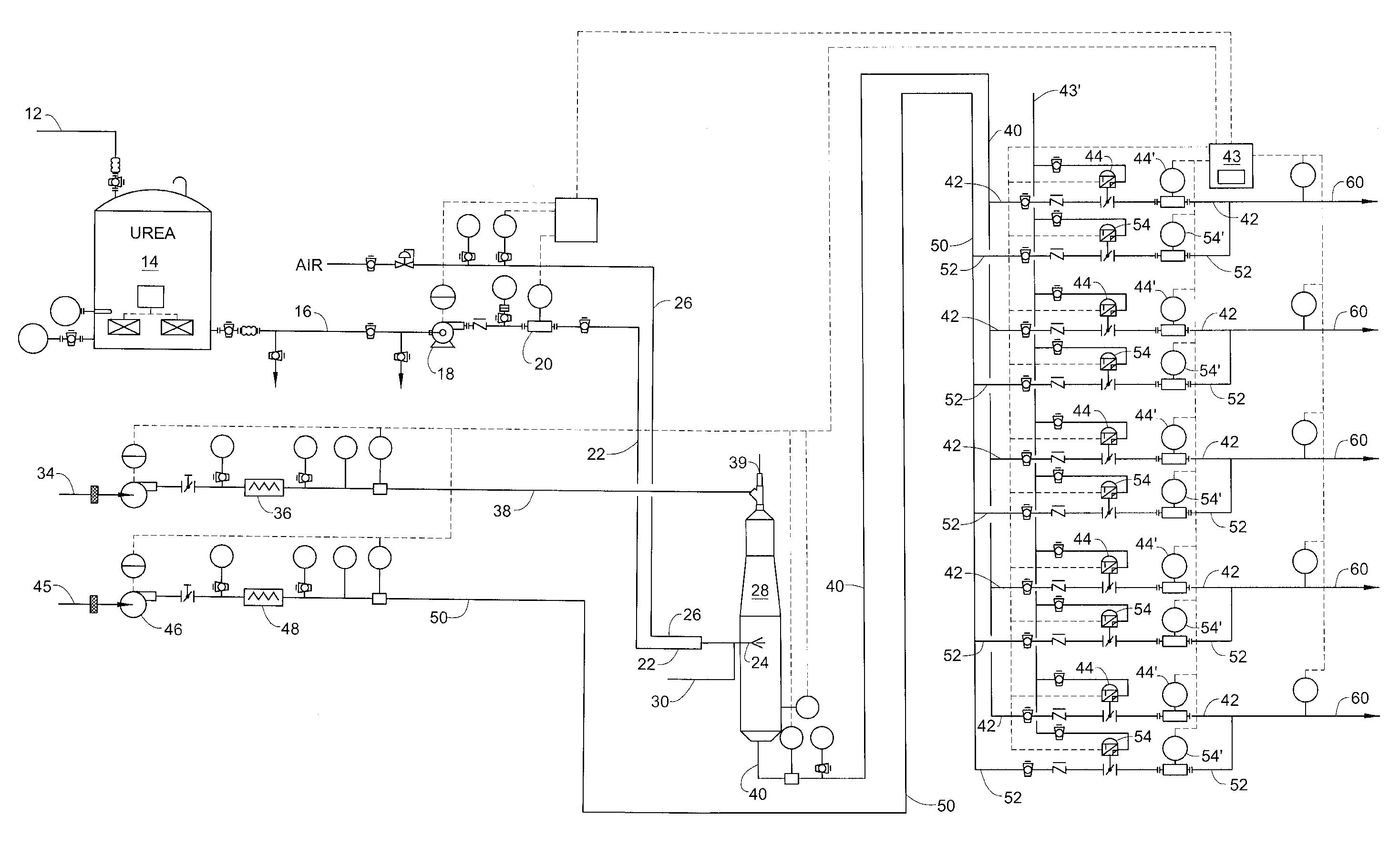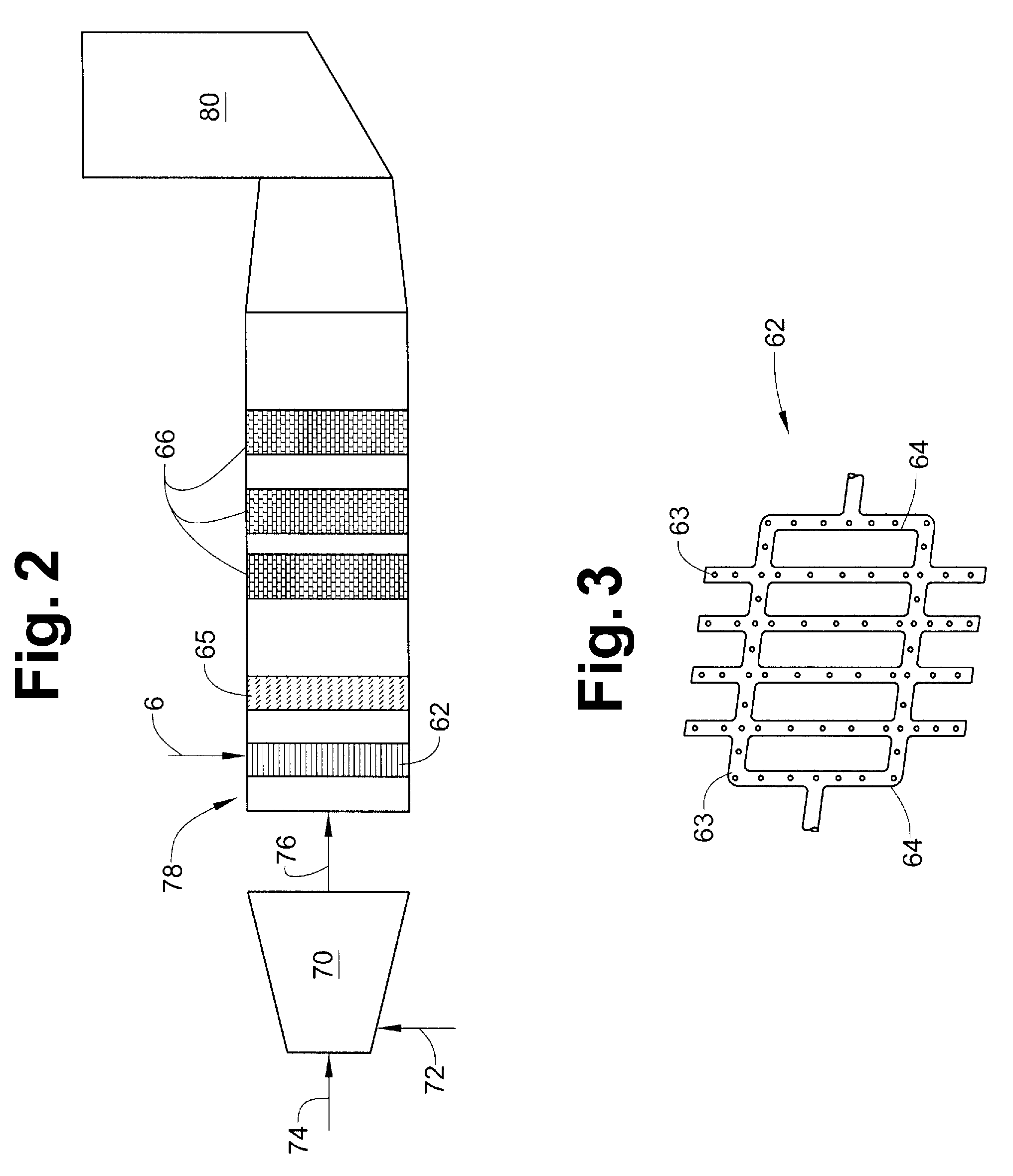Selective Catalytic NOx Reduction Process and Control System
a control system and catalytic nox technology, applied in the direction of separation process, lighting and heating apparatus, dispersed particle separation, etc., can solve the problems of reducing the efficiency of urea utilization, and reducing the concentration of nitrogen oxides
- Summary
- Abstract
- Description
- Claims
- Application Information
AI Technical Summary
Benefits of technology
Problems solved by technology
Method used
Image
Examples
Embodiment Construction
[0017]In describing the present invention, reference is made to the drawings, wherein there is seen a preferred embodiment shown schematically in FIG. 1. The drawing and the process it represents will be described briefly below, without undue recitation of sensors, pumps, indicators, transmitters, valves, pumps, and the like which are so well known to those skilled in engineering systems of this type. Various labels are used in the drawings to have the meanings as follows: TE=temperature element / sensor, LT=level transmitter / sensor, VFD=variable frequency drive, SC=speed control, PI=pressure indicator / sensor, TI=temperature indicator / sensor, FT=flow transmitter, I / P=current to pressure transducer, FIT=flow indicating transmitter, M=flowmeter, PLC=programmable logic controller.
[0018]With reference to FIG. 1, a feed line 12 leads to urea tank 14 to maintain a sufficient supply of an aqueous solution of urea or like chemical as described in U.S. Pat. No. 7,090,810, the disclosure of whi...
PUM
 Login to View More
Login to View More Abstract
Description
Claims
Application Information
 Login to View More
Login to View More - R&D
- Intellectual Property
- Life Sciences
- Materials
- Tech Scout
- Unparalleled Data Quality
- Higher Quality Content
- 60% Fewer Hallucinations
Browse by: Latest US Patents, China's latest patents, Technical Efficacy Thesaurus, Application Domain, Technology Topic, Popular Technical Reports.
© 2025 PatSnap. All rights reserved.Legal|Privacy policy|Modern Slavery Act Transparency Statement|Sitemap|About US| Contact US: help@patsnap.com



